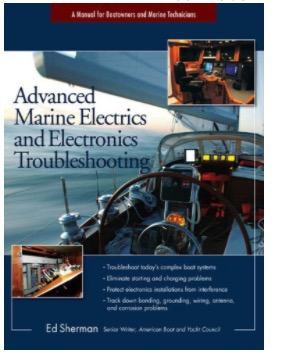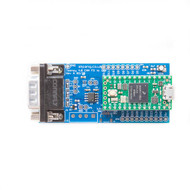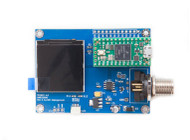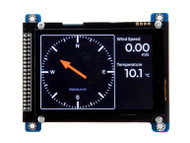Product Description
Free Shipping Within the United States!
The NMEA 2000 Simulator is a compact, reliable tool designed for developers, technicians, and marine electronics enthusiasts who need to test or prototype NMEA 2000-compatible devices in a controlled workbench environment. At its core is the powerful Teensy 4.0 microcontroller, pre-installed and pre-flashed with open-source simulator firmware. This hardware-software combination enables users to emulate real-world NMEA 2000 data traffic and verify the response of connected devices or display systems.
The simulator provides six adjustable Parameter Group Numbers (PGNs), four of which are modifiable via rotary potentiometers and two via onboard push-button switches. This setup allows for real-time variation of data values to simulate changing sensor inputs, such as wind conditions or engine RPM. The open-source firmware, included with the device, is easily customizable, allowing users to modify existing PGNs or add new ones according to their testing requirements.
What is NMEA 2000?
NMEA 2000 is a standardized communications protocol developed and maintained by the National Marine Electronics Association (NMEA). It is specifically designed for marine electronics networking and allows multiple devices — such as GPS receivers, autopilots, sonar, weather instruments, and engine monitors — to exchange data seamlessly on a single, integrated network.
NMEA 2000 is built on the CAN (Controller Area Network) physical layer and operates at a fixed baud rate of 250 kbps, providing reliable and deterministic communication. The network supports multi-master, multi-drop topology with terminators at each end of the bus, using standardized Micro-C or Mini-C connectors for plug-and-play connectivity.
Unlike the earlier NMEA 0183 standard, which relied on point-to-point connections and ASCII text, NMEA 2000 uses binary-encoded messages called PGNs (Parameter Group Numbers). These PGNs contain structured data fields and are optimized for bandwidth efficiency and multi-device interoperability.
Supported PGNs and Their Functions
The simulator supports a core set of PGNs that cover a variety of real-world marine scenarios:
-
PGN 130310 – Environmental Parameters (Water Temperature)
Simulates environmental data such as water temperature. This PGN is commonly used by temperature sensors and multi-function displays to monitor onboard and external water conditions. -
PGN 130306 – Wind Data (Speed and Direction)
Represents apparent or true wind data, including speed and angle. It is frequently used by sailboats and weather stations. The simulator allows dynamic wind simulation through potentiometer input. -
PGN 127488 – Engine Parameters (Engine RPM)
Delivers data on engine revolutions per minute. This PGN is fundamental in engine monitoring applications and is used by displays and alarm systems. -
PGN 129026 – COG & SOG, Rapid Update (Course Over Ground and Speed Over Ground)
Provides high-rate updates on course and speed, essential for navigation systems and autopilots. The simulator allows real-time tuning of both values to mimic vessel movement.
These PGNs can be monitored and tested using standard NMEA 2000 multi-function displays or software-based diagnostic tools.
Hardware Features
-
Microcontroller: Teensy 4.0 (pre-installed)
-
Firmware: Open-source and user-modifiable, pre-flashed for out-of-the-box operation
-
CAN Interface: 250 kbps (NMEA 2000 standard)
-
Connector: Standardized NMEA 2000 Micro-C
-
User Input:
-
6x rotary potentiometers for analog adjustment of PGN values
-
2x push-button switches for toggle-based inputs
-
-
Indicators: 2x onboard LEDs for power and activity status
Firmware Capabilities
-
Real-time PGN simulation with adjustable parameters
-
Expandable PGN support with editable source code
-
Easy integration into existing NMEA 2000 setups
-
Compatible with diagnostic tools and MFDs (Multi-Function Displays)
Whether you're developing a new NMEA 2000 device, testing a marine display, or building a prototype navigation system, this simulator provides a flexible and hands-on environment for validating communication and data parsing under realistic conditions.
 Advanced Marine Electrics and Electronics Troubleshooting
Advanced Marine Electrics and Electronics Troubleshooting
Whether you are a marine electronics professional or a boat owner, Advanced Marine Electrics and Electronics Troubleshooting helps you understand the new, more powerful methods of troubleshooting marine electrical and electronic systems.
A modern boat’s sophisticated installations and networked electronics can stretch the traditional diagnostic methods based on trouble lights and multimeters past their useful limits.
This book will show you how to:
- Use microprocessor-based diagnostic tools and techniques from the automotive and communications sectors, adapted for boats for the first time
- Diagnose the most difficult AC and DC problems
- Protect communications and navigation electronics from interference and lightning
- Seek out and eliminate stray-current sources and galvanic corrosion
 Loading... Please wait...
Loading... Please wait...








